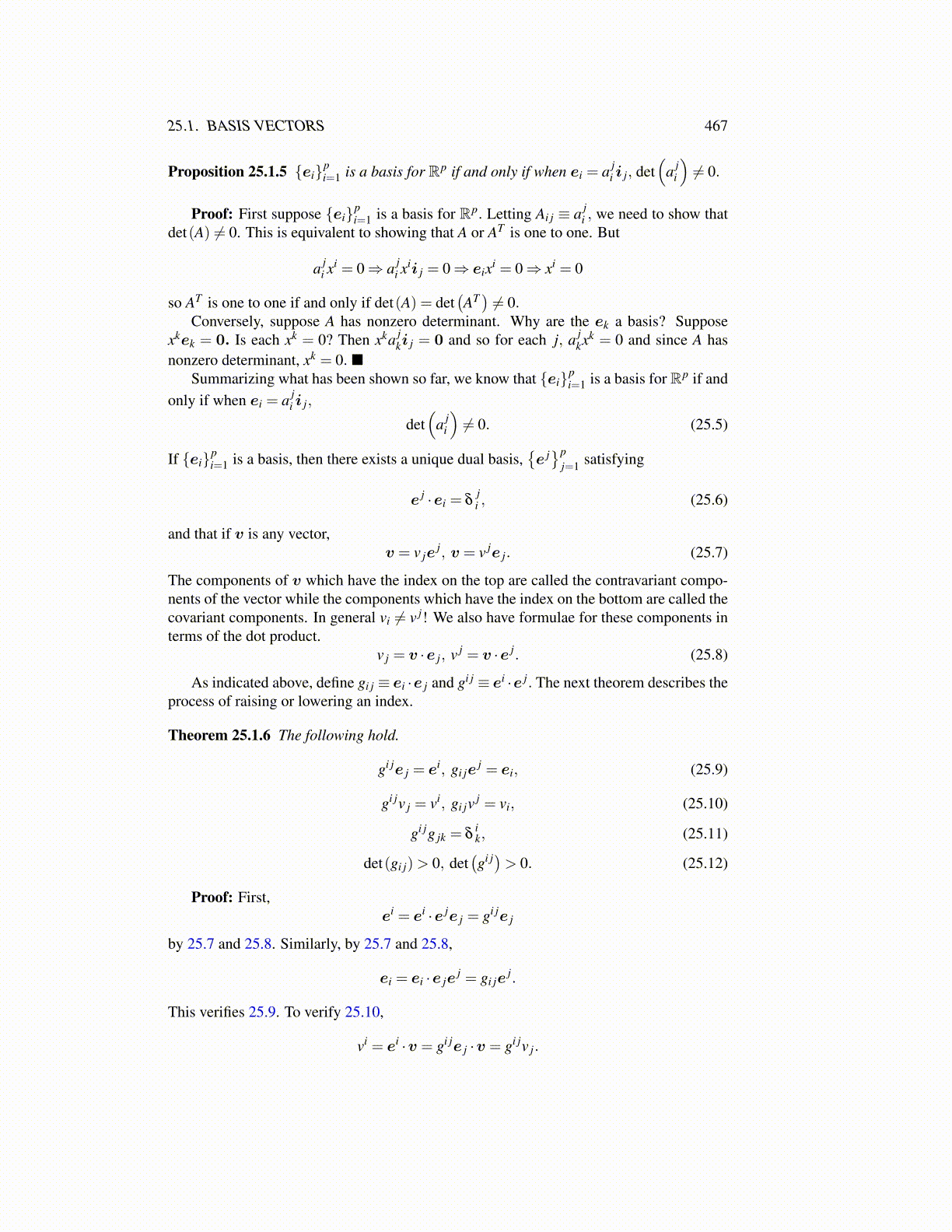
25.1. BASIS VECTORS 467
Proposition 25.1.5 {ei}pi=1 is a basis for Rp if and only if when ei = a j
i i j, det(
a ji
)̸= 0.
Proof: First suppose {ei}pi=1 is a basis for Rp. Letting Ai j ≡ a j
i , we need to show thatdet(A) ̸= 0. This is equivalent to showing that A or AT is one to one. But
a ji xi = 0⇒ a j
i xii j = 0⇒ eixi = 0⇒ xi = 0
so AT is one to one if and only if det(A) = det(AT)̸= 0.
Conversely, suppose A has nonzero determinant. Why are the ek a basis? Supposexkek = 0. Is each xk = 0? Then xka j
ki j = 0 and so for each j, a jkxk = 0 and since A has
nonzero determinant, xk = 0. ■Summarizing what has been shown so far, we know that {ei}p
i=1 is a basis for Rp if andonly if when ei = a j
i i j,
det(
a ji
)̸= 0. (25.5)
If {ei}pi=1 is a basis, then there exists a unique dual basis,
{e j}p
j=1 satisfying
e j ·ei = δji , (25.6)
and that if v is any vector,v = v je
j, v = v je j. (25.7)
The components of v which have the index on the top are called the contravariant compo-nents of the vector while the components which have the index on the bottom are called thecovariant components. In general vi ̸= v j! We also have formulae for these components interms of the dot product.
v j = v ·e j, v j = v ·e j. (25.8)
As indicated above, define gi j ≡ ei ·e j and gi j ≡ ei ·e j. The next theorem describes theprocess of raising or lowering an index.
Theorem 25.1.6 The following hold.
gi je j = ei, gi jej = ei, (25.9)
gi jv j = vi, gi jv j = vi, (25.10)
gi jg jk = δik, (25.11)
det(gi j)> 0, det(gi j)> 0. (25.12)
Proof: First,ei = ei ·e je j = gi je j
by 25.7 and 25.8. Similarly, by 25.7 and 25.8,
ei = ei ·e jej = gi je
j.
This verifies 25.9. To verify 25.10,
vi = ei ·v = gi je j ·v = gi jv j.